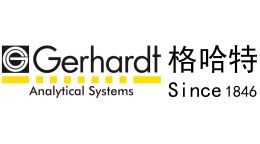方案详情文
智能文字提取功能测试中
来自于富含啤酒花的沼气池的纤维与天然纤维作为复合材料的原料的比较Comparison of fibers from hop rich biogas digestate with natural fibers as raw material for compositesJOURNAL OF NATURAL FIBERS2022, VOL. 19, NO. 17, 16029-16039https://doi.org/10.1080/15440478.2021.1958426Taylor & FrancisTaylor & Francis Group 16030M. GEBHARDT ET AL. 来自于富含啤酒花的沼气池的纤维与天然纤维作为复合 8 OPEN ACCESS Chec k f o r u p dates 材料的原料的比较 Co mp arison of fibers from ho p rich bio ga s di ge state with natura l fibers as raw material for composites Marion Gebhardt, Nina Wanek , Andreas Lemmer , and Gotz theodor Gresser a DITF Deutsche Institute fur Textil- und Faserforschung Denkendorf, Denkendorf , Germany; Landesanstalt fur Agrartechnik und Bioenergie, Universitat Hohenheim, Stuttgart, Germany ABSTARCT KEYWORDS Fibrous material extracted from biogas digestate is investigated as a possible raw material for composites. Digestate is a by-product of every biogas plant and consists mostly of water, undegraded plant biomass, and minerals. On the other hand, natural f ibers and fibrous by-products are increasingly used as fiber component, especially in short-fiber reinforced plastics. The fibrous solid fraction of biogas digestate can be another alternative fiber source. The properties are decisive to determine the suit-ability of raw materials. Information on the length and constituents of woody and various non-woody plants can be found in the literature. In the study presented, fibrous solids obtained from digestate with a high content of hop vines are investigated. Fiber length and cell wall matter content are analyzed to characterize the digestate. The results are com-pared with classical plant fibers. It turns out that the investigated fibrous solids from digestate have a very inhomogeneous length distr i bution. The equalization can be achieved through an additional process step. The proportion of cell wall matter i s comparable to that of woody plants and various non-woody plants. The fibers extracted from hop digestate can be regarded as an ecological and favorable alternative to wood fibers in composite materials. Word; biocomposites; biogas digestate; natural fibers;waste 关键词 词;生物复合材料;沼气消 化液、;天然纤维;废物 摘要 研究了从沼气中提取的纤维材料作为复合材料的可能原料.消化液是每个 沼气厂的副产品,主要由水、未分级的植物生物量和矿物质组成.另 一 方面,天然纤维和纤维副产品越来越多地用作纤维成分,特别是在短纤维增强 塑料中.沼气消化液的纤维固体部分可以作为另 一 种替代纤维来源.这些特 性对确定原材料的适用性具有决定性作用,有关木本和各种非木本植物的 长度和成分的信息可在文献中找到.在本研究中,对从含有大量啤酒花藤的 消化液中获得的纤维状固体进行了研究,分析纤维长度和细胞壁物质含量 以表征消化物.结果与经典的植物纤维进行了比较.结果表明,所研究的消 化液中的纤维状固体具有非常不均匀的长度分布.均衡可以通过额外的处 理步骤来实现.细胞壁物质的比例与木本植物和各种非木本植物相当.从啤酒花消化液中提取的纤维可被视为复合材料中替代木纤维的生态和有利的 替代品. Introduction The world f iber production of synthet i c and natural fibers in general shows an increase of 35000000 t in the last ten years (DNFI- Discover Natural Fibres Initiative 2018). The increasing use of composites concerns both high-performance fibers and natural fibers. The demand of carbon composites increased by 10% from 2018 to 2019 (Sauer 2020). The production of natural fibers has increased 4 CONTACT Marion Gebhardt marion.gebhardt@ditf.de e DD Deutsche Institute Fur Textil- Und Faserforschung, KorschtalsstraBe 26,73770, Denkendorf, Germany ◎ 2021 The Author(s). Published with license by Taylor & Francis Group, LLC. This is an Open Access art i cle distributed under the terms of the Creative Commons Attribution-NonCommercial-NoDerivatives License (http://creativecommons.org/licenses/by-nc-nd/4.0/), which permits non-commercial re-use, distribution, and reproduction in any medium, provided the original work is properly cited, and i s not altered, t ransformed, or built upon in any way. times in 10 years, only for application in automotive interiors (Siebel 2020). Natural fiber plant needs agricultural land to grow. In 2019 4165168 ha of fiber plants are cultivated worldwide and 291742 ha of them in Europe (Fao.org 2021). This land cannot be used for growing food. One solution to solve this problem is to use waste and byproducts instead of new material. This study deals with an alternative material for fiber composites. In fiber composites, f ibers are combined with a plastic matrix. In (Campbell 2010) it i s said that composites show beneficial properties that the individual components do not exhibit. The fibers are divided i nto short fibers, long fibers, and continuous fibers, depending on their l ength. The fibers can be embedded i ndividually into the matrix or can first be formed into a textile. The task of the f ibers is to carry the load. The load is introduced into the fibers through the matrix. Besides transforming the limp fibers/textiles into a rigid material, the matrix protects the fibers from environmental i nfluences (Campbell 2010). (Crowther 1995) defines fibers generally as thread-like structures. The length to diameter ratio of fibers in technical application is at least 3:1; in the textile field the ratio can be more than 1000:1, see (Schenek 2001). Natural fibers are defined in DIN 60001-1 as "natural, linear structures which can be processed into textiles. They can be obtained from plant parts or form the pelage of animals, or be obtained from the cocoons of silk moths, or be of mineral, natural origi n ”(DIN Deutsches Institut fur Normung e.V 2001). Plant fibers are c l assified into the following groups: Hard fibers, bast fibers, seed fibers, and wood fibers. Examples for the different fiber types are the following: Hard fibers are the fibers of the leaf sheath of the sisal plant (Agava Sisalana). Cotton (Gossypium ssp.) is a seed fiber and is processed in particular into clothing. Bast fibers are obtained from the stems of plants. Flax (Linum Usitatissimum) (DIN Deutsches Institut fur Normung e.V 2001; Kozlowski, Baraniecki, and Barriga-Bedoya 22005;Schenek 2001). Wood fibers can be obtained from soft- and hardwood. They are used in middle density fiber board (MDF) (Essel et al. 2015). To obtain plant fibers, mechanical and chemical processes are used to extract the fibers from the plant. Plant fibers have different lengths depending on their plant of origin. Some examples of the length of single fibers from various plants are presented in Table 1 (Berger et al. 2011; Riley 2012). Bundles of single fibers are called technical fibers and can reach lengths of over one meter (Berger et al. 2011). The typical density of plant f ibers is around 1.5 g/cm’, examples are flax with 1,5 g/cm’and Sisal which differs between 1,3 and 1,45 g/cm’. (Cherif 2011). The main component of plant fibers is cell wall. The largest proportion of the cell wall is cellulose; the other parts are lignin and hemicellulose. Table 2 shows the cellulose and lignin content of various plant fibers. In (Fortea-Verdejo et al. 2017) it is written that cotton has an extremely high cellulose content of up to 90%. The value for wood fibers is an average value, the exact value depends on the wood type, see (Garrote, Dominquez, and Parajo 1999). One possibility to detect the chemical composition of fibers is the Fourier transform infrared spectro-scopy. Lignin is S typically represented by signals of 1150-1750^cm-(Spectro 20115), and cellulose is represented due to signals in the range of 3660-2900 cm-1 and 1630-900 cm-1(Cichosz and Masek 2020; Hospodaravo 2018). To determine hemicellulose, a peak around 1000 cm-1 can be used (Spectro 2015). In fiber composites, natural fibers are increasingly used as an alternative to glass fibers. The reasons for the substitution are described in different studies. On the base of their low density,natural fibers have good specific properties. Natural fibers are processed into interior components for the automotive industry. This saves energy due to the low weight and reduces the CO, impact (Cantero et al. 2003; Riedel and Nickel 2000). Another example is the so-called Wood Plastic Composites (WPC). Wood flour and wood fibers are mixed with thermoplastics and processed into injection-molded parts, which are often used outdoors as decking boards (Barbos et al. 2020;Vogt et al . 2006). In order to improve the utilization of natural resources, the upcycl i ng of waste materials is a field of growing interest. Wood and natural fibers are specially grown for fiber 16031 composites, causing reduction of land for food production (Liitz et al . 2019). In the field of composites investigations into the use of recycled fiber or plastics, waste from natural fiber production, and other agricultural wastes are intensified (Macatangay, Magundayao, and Rosales 2012; Ramamoorthy, Persson, and Skrifvars 2014). Some examples of alternative materials in composites are feathers (Mishra and Nayak 2010), coconut waste (Bradley and Conroy 2019;Sergion et al. 2005) or hair from coffieurs (Eshwara, Divakara, and Udaya 2018). In the mentioned studies i t is said that the materials are chosen because of their high amount and because they are regionally available. This makes the raw material s a sustainable alternative. Biogas technology is widespread worldwide with about 132000 plants and more than 10% of the world's biogas plants are located i n Europe (Jain 2019; Konigsberger, Deorte, and Reuland 2019). The substrates used are mainly agricultural products. Depending on the used substrate for the anaerobic digestion, the digestate has different structures. Besides water and minerals, the digestate largely consists of nondegraded ligno-cellulosic plant biomass. The cell wall components cellulose and lignin are difficult to decompose, t his is explained in detail i n (Schimpf et al. 2013). For this reason, i t is obvious to consider digestate as a fiber raw material. Currently, digestate i s returned to the fields as farm f ertilizer. There are already approaches to i ncrease the added value by processing digestate i nto fibrous material, which can be mixed into wood fiberboard and achieves a maximum content of 30%this process (Essel et al. 2015). Digestate represents potentially f ibrous biomass that is not used for any industrial processing.No investigation of digestate with respect to its usability in composites has taken place up to now. In this work, the qualification of the digestate as a fiber raw material is investigated. The necessity, as well as the influence, of processing will be considered. Digestate with l ignocellulosic starting substrate is expected to have a high content of fibrous material. In the presented work,digestate from a biogas station using high amounts of hop residues with a substantial l ignocel-lulose content has been selected. Hop belongs to the hemp family and was used to gain fibers until the 1950s. The fibers were, for example, raw material for the paper industry (Hanausek 2012; Ulrich 1956). The aim of the utilization of the fermentation residues is to increase the value-added chain of the biogas plants. By utilizing the digestate, food, energy, and materials can be produced from a single harvest. The presented study serves to gain first basic knowledge about the fibers obtained from hop-containing digestate. Material and methods Material The used digestate originates from a biogas plant located in Germany's larges t hop-growing region, the Hallertau. The plant has a primary digester volume of 6000 m’ and operates at a temperature of 43℃with a daily substrate feeding of 244 532 kg. The hydraulic retention time is 83 days for the primary digester. The resulting biogas is upgraded to natural gas quality and the yield is 25 000 m’ methane per day. The used substrate i s a mixture of 75% chopped hop vines and 25% corn silage, grain whole plant s ilage, and corn cob mix. The solid part of the digestate, which was taken after separation with screw press, is used for the experiments. The digestate was treated in two different ways. In the f irst variant, the digestate was only dried at room temperature with circulating air (called d-untreated) and in the second variant it was additionally cleaned. For the second varian o t, the dig f 1 I. ko-1 dry estate was sanitized with 3% hydrogen peroxide solution (H2O2) at a dosage of 1 L kgdry weight. For actual cleaning, f ive washing passes were performed in an ultrasonic bath (40 kHz). The cleaned digestate was then sieved with a sieve opening of 0.25 mm (called d-treated). Figure 1 shows a comparison of the untreated and treated digestate. The digestate has a distinct elongated, slender shape and is obtained from lignocellulosic substrate, which will be referred as fiber in the following. The influence of preparation on fiber quality will be investigated. Commercially available flax fibers are used as comparative material. Methods Sieving of the digestate fibers By sieving the dried digestate, an initial rough characterization of the size fractions is made. It is determined which fraction of the digestate is suitable for further processing in the fiber composite sector. Four sieves with different opening sizes are used (3.0 mm, 2.0 mm, 1.0 mm, 0.5 mm), each being moved gent l y for 30 seconds, by hand at about 2.5 Hz to 3.0 Hz. The fiber content of each sieve,as well as the bottom i s determined by weighing. The sieving is repeated t hree times for each variant. Fiber length determination For a reproducible production of composites from the digestate, knowledge of length range is crucial.Dust and f ine particles should not be measured as they are not used as fibers. For this reason, the fibers from the sieved fractions (content of the sieves with 1.0 mm to 3.0 mm opening size) are measured.The measurement is based on DIN 53808-1:2003-01. A material sample is taken and the length ofeach individual fiber is determined with a ruler. A measurement must have an amount of at least 100 fibers.To ensure that enough fibers are measured, the whole sieved material was measured. In addition to the length, the aspect ratio (length/diameter) is calculated from the cleaned digestate by measuring the diameter. Determination of the density The density i s determined in comparison to other media. To measure the material density a ground sample of digestate i s pressed into a pill. The density is approximated by comparing i t to solvents with known density. The following chemicals are used: n-Heptan (0,68 g/cm’), tetrachlorkohlenstoff (1,59 g/cm’) and 1,3-Dibrompropan (1,99 g/cm’). These three solvents are mixed to obtain a row of densities. The digestate pill i s placed i nto a test glass with a solvent. When the material sinks to t he bottom of the test glass the density is higher compared to the solvent; when i t swims the density is the same and when i t stays on the surface the density is lower than the solvent density. A difference of 0.01 g/cm^3 is chosen to get a precise result. Determination of the chemical composition - FTIR To determine the chemical composition of the digestate material the Fourier-transform infrared spectroscopy is S used. Infrared (IR) spectra were recorded on a l Perkin Elmer “FT-IR/NIR Spectrometer Frontier” with a“GladiATR” from PIKE technologies in the range from 4000-400 cm and with a resolution of 4 cm. Both background and sample were measured with each 24 scans. The spectra were baseline corrected. A software named“Spectrum IR,”provided by Perkin Elmer, was used to analyze the data. Both samples, the treated and untreated digestate, were analyzed. 废旧植物纤维 Determination of the ingredients - Feed analysis according to van SOEST In order to be able to compare the fermentation residues with the previously used plant fibers and wood, the proportion of cell wall constituents is determined. For the determination, the feed analysis 木头 Table 1. Length of plant fibers (Berger et al . 2011, Riley 2012). Plant Botanical name Length [mm] Sisal Agava Sisalana 3-4 Flax Linum Usitatissimum 3-4 Cotton Gossypium ssp. 12-64 Softwood 一 3-4 Hardwood 一 1-1.5 according to van Soest is used (Van Soest and Robertson 1970). The digestate material is ground and washed out in three successive steps in different solvents. Flax fibers are also analyzed to verify the method. The determination is based on DIN EN ISO 13906 and 16472 (DIN Deutsches Institut fiir Normung e.V 2008,2006). The analysis i s done with the Gerhardt-FibreBag system (see (Fettweis and Kuhl 2010)). The analysis steps are shortly described in the following: In the first step, a neutral detergent solution is used to dissolve all the non-cell wall components. The remaining part is called neutral detergent fiber (NDF). The samples are washed out with hot water and dried at 105℃.Subsequently, acid detergent solution is used for dissolving everything except cellulose and lignin.The remaining part is called acid detergent f iber (ADF). For this purpose, the samples remain i n boiling acid detergent solution for one hour. The samples are washed out again and dried. Exposure to 72% sulfuric acid for three hours removes the cellulose as well. The remaining part is called acid detergent lignin (ADL). The samples are dried again. In one batch, five replicates each containing 1.0 g of ground fiber were added to 360 ml of the respective solution. After performing the solution steps, Figure 1. Digestate, a: after cleaning, b: before cleaning with highlighted dirt part i cles. the remaining material is burned at 500℃ to get the ash content. The proportions of the structural component fractions (NDF/ADF/ADL) can be calculated. Equation (1) is used to calculate the NDF%.The calculation of ADF and ADL follow the same approach The exact contents of cellulose, hemicellulose, and lignin can be determined by subtracting the individual percentage (see in equation (2)-(5)). Results Sieving fractions Table 3 presents the percentages of the four different size categories. The size range >3 mm i s the largest propor t ion in the untreated and t reated digestate. Due to t he washing of the digestate the finest particles are already removed. As a result , the proportion of coarser material increases by 14%. Overall, the distribution of the various particle sizes is comparable to that of the untreated digestate. It is noticeable that the scattering of the values is reduced due to the washing.The coarse fraction (sieve 1) shows a standard deviation of 13.3% for d-untreated and 4.5% for d-treated. Because of the removals of the small particles due to t he washing process, the scattering of the whole material is reduced. Fiber length Figure 2 shows the fiber length of the different treated digestates. The distribution of the fibers among the different length fractions is approximately the same in both variants. The fiber length of the untreated digestate ranges from 1 mm to 42 mm. The treated digestate has a fiber length from 1 mm to 46 mm. The average fiber length of the untreated digestate is 9.75 mm compared to the washed digestate with 12 mm. This difference is explained by the low percentage of fine fibers (<2 mm). The higher average fiber length of the treated digestate car be attributed to the washing process. The higher average fiber length of the treated Figure 2. Fibe r length distribution of treated and untreated digestate in percentage. 16035 Fi gure 3. Result of the FTIR, red: untreated, black: treated. digestate as well as the larger proportion of fibers over 18 mm can be attributed to washing processes. The ultrasonic bath shakes off the dust and other small particles which adhere to the longer particles. The sieving, which is included in the washing process, leads to a removal of the small particles wi t h the washing water. Because all small particles are gone, the middle fiber length is higher for the treated material. The rather high scattering of the values is common in the field of natural fibers. Compared to common natural fibers like flax and cotton,digestate fibers are shorter (compare Table 1). A large proportion of the digestate fibers are within a length range of 2 mm to 11 mm. They are in a similar range as the wood fibers used for WPC with a length between 3 mm and 10 mm. The aspect ratio of the cleaned digestate ranges from 2 to 43 whereas the main part (50%) has an aspect ratio between 3 and 8. As F ig ure 1 shows, the digestate is inhomogeneous and the material has no round diameter. The calculation of the aspect ratio is not reliable because of this fact, it can only be an estimation. Most of the digestate fiber have an aspect ratio of 3 what is the minimum ratio for a fiber. Density The density of the treated and untreated digestate sample is comparable to the density of other plant fibers. The treated digestate has a density of 1,46-1,47 g/cm^3, the density of t he untreated sample is with 1,48 g/cm^3 a little bit higher. In the washing process, dust and dirt particles are removed; this can lead to minimal lower density. Chemical composition The IR spectrum is shown i n Figure 3. The infrared spectra are domina 1:0:ted by cellulose as compared to the literature. In addition, signals result i ng from l ignin can be found in the range from 1150-1750 cm and the presence of hemicellulose is underlined by an intensive peak just above 1000 cm-The treated and the untreated samples show minor differences. The spectrum of the treated one shows a reduced signal intensity around 1000 cm- and the signal at 870 cm-almost vanished. The smal l differences show that the washing process does not influence t he chemical composition of the digestate. Table 2. Cel l ulose and lignin content of different plants (Fortea-Verdejo et al. 2017, Garrote, Dominquez, and Parajo 1999, Ververis et al. 2003). Plant Cellulose [%] Lignin [%] Hemicellulose [%] Cotton 90 NN NN Cereal straw 38-45 12-20 15-31 Rice straw 36-47 10-24 19-25 Softwood (Pine) 42 29 26 Hardwood (Birch) 41 19 36 Flax 70 2 19 Figure 4 shows the percentages of soluble components, hemicellulose, cellulose, lignin, and ash of digestate and comparative fibers. For a better classification, the values from wood (Table 2) are integrated in the f igure. Figure 4. Results of feed analysis in percentages of dry mass. Washing of the digestate decreases the percentage of soluble components from 37% to 17%. After washing, the digestate has a cellulose content of about 30%; compared to 23% without washing. The flax fibers have a significantly higher cellulose content of 81%. The l ignin content of treated digestate i s Table 3. Sieve f ractions in percentage of dry fibers. d-untreated d-treated Sieve Opening [mm] Mean [%] Sta Dev [%] Mean[%] Std Dev [%] 1 ≥3.0 43.2 13.3 57.5 4.5 2 ≥2.0 30.5 2.2 20.4 2.6 3 ≥1.0 20.1 7.1 16.0 1.4 4 ≥0.5 4.9 3.2 4.8 0.6 Floor <0.5 1.0 1.0 1.4 0.3 16037 about 33%, while flax fiber contains only about 3% l ignin. The literature data for flax are a little bit lower, this can be caused by the fiber type, which is not known. The cellulose content of the washed digestate i s lower than that of and cereal or rice straw. The lignin content i s similar to hardwood. The initial substrate of the digestate largely consists of woody hop vines. This explains the similarity of t he proportions of structural components to woody plants. Large parts of the plant's biomass are degraded in the biogas process. In the residue, mainly i ndigestible cell wall constituents are found, even though the substrate contains grasses i n addition to the vines. The ingredients are comparable to wood fibers.Washing i n an ultrasonic bath removes other adhering substances, thus i ncreasing the cell wall content in the washed material. Conclusions The hop-containing digestate shows comparable ingredients and properties to wood fibers. The experiments show that the washing of the digestate leads to a fiber-like material. The washing homogenizes the length distribution of the digestate fibers and increases the relative cell wall content.The composition of the digestate is similar to that of wood flour and fibers which are mixed into WPC.The use of the washed digestate in composites i s conceivable. A digestate composite can be a possible fiber for composites in automotive interior. As described in the literature, this sector uses a lot of natural f ibers, and so the use of digestate can have a great effect. Acknowledgments The work was funded by the federal ministry for economic affairs and energy, under t he number ZF4060062CM9. Author contributions Marion Gebhardt scientist at the German institutes for textile- and fiber research (DITF), Nina Wanek bachelor student and wrote her semester thesis at the DITF. Andreas Lemmer senior scientist and lecturer at the State Institute of Agricultural Engineering and Bioenergy, University of Hohenheim. Gotz T. Gresser member of the executive board of the DITF Funding This work was supported by the Bundesministerium fur Wirtschaft und Energie [ZF4060062CM9]. References Barbos, J. D. V., J. B. Azevedo, M. Da Silva, P. Cardoso, F. da Costa Garc i a Filho, and T. G. Del Rio. 2020. Development and characterization of wpcs produced with high amount of wood residue. Journal of Materials Research and Technology 9 (5):9684-90. doi:10.1016/j.j m r t.2020.06.073. Berger, W., H. Faulstich, P. Fischer, A. Heger, and H.-J. Jacobasch. 2011. Textile Faserstoffe [textile fiber resources].Berlin: Springer. Bradley, W. L., S. Conroy, R. H. Setyobudi, F. D. Suprianto, M. Mel, O. Anne, P. Soni, T. Turkadze, Y. Jani, and Z. Vincevica-Gaile. 2019. Using agricultural waste to create more environmentally friendly and affordable products and help poor coconut f armers. E3S Web of Conferences 130 (1034):1-10. doi:10.1051/e3sconf/201913001034. Campbe ll , F. C. 2010. Structural composite materials. ASM International. Cantero, G., A. Arbelaiz, R. Llano-Ponte, and I. Mondragon. 2003. Effects of fibre treatment on wettability and mechanical behaviour of flax/polypropylene composites. Composites Science and Technology 63 (9):1247-54.doi:10.1016/S0266-3538(03)00094-0. Cherif, C. 2011. Textile Werkstoffe fiir den Leichtbau [Textile materials for light weight design]. Heidelberg: Springer. Cichosz,S.,and A. Masek. 2020. IR study on cellulose with the varied moisture contents: insight into the supramolecular structure. Materials 13 (20):4573. doi:10.3390/ma13204573. Crowther, J. 1995. Oxford advanced learner’s dictionary of current English. Oxford: Oxford Universty Press. DIN Deutsches Institut fur Normung e.V. 2001. DIN60001-1:2001-05Textile f ibres - Part 1: Natural f ibres and letter codes. Berlin: Beuth Verlag. DIN Deutsches Institut f ur Normung e.V. 2006. EN ISO 16472:2006 animal feeding stuffs - Determination ofamylase-treated neutral detergent fibre content (aNDF). Berlin: Beuth Verlag. DIN Deutsches Institut fur Normung e.V. 2008. EN ISO 13906:2008 animal feeding stuffs - Determination of acid detergent fibre (ADF ) and acid detergent lignin (ADL) contents . Berlin: Beuth Verlag. DNFI -Discover Natural Fibres Initiative. 2018. Forecast world fibre production. Bremen Cotton Report. No.05/06 Eshwara, P. K., R. P. Divakara, and K. C. Udaya. 2018. Experimental studies on behavior of keratin based human hair fiber - A new reinforcing materia l for composites. International Journal of Engineering e Technology 7 (4.5):459-63.doi:10.14419/ijet.v 7i4.5.20207. Essel, R., E. Breitmayer, M. Carus, A. Pfemeter, and U. Bauermeister. 2015. Stoffliche Nutzung lignocellulosehaltiger Garprodukte fur Holzwerkstoffe aus Biogasanlagen [Use of lignocellulose rich digestate for wood board production]. Fao.org. 2021. Food and Agricultural Organization of the United Nations. h ttp://www.fao.org/fa ostat/en/#data/QC Fet t weis, U., and J. Kuhl . (2010). Comparative tests for the purposes of a crude f ibre analysis using both the official VDLUFA method and fibrebag technology(C. Gerhardt). In editor:V Verband Deutscher Landwirtschaftlicher Untersuchungs- und Forschungsanstalten,Landschaftselement oder Rohstofflieferant - Zur Multifunktionalitaet des Gruenlandes Vol. 66, 804-10. Darmstadt: VDLUFA-Verlag. Fortea-Verdejo, M., E. Bumbaris, C. Burgstaller, A. Bismarck, and L.-Y. Lee. 2017. Plant fibre-reinforced polymers:Where do we stand in terms of tensile properties? International Materials Reviews 62 (8):441-64. doi:10.1080/09506608.2016.1271089. Garrote, G., H. Dominquez, and J. C. Parajo. 1999. Hydrothermal processing of lignocellulosic materials. Holz als Roh-und Werkstoff 57 (3):191-202. doi:10.1007/s001070050039. Hanausek, T. F. 2012. Lehrbuch der Technischen Mikroskopie [Book of technical microscopy]. Paderborn: Salzwasser-Verlag. Hospodarova, V., E. Singovszka, and N. Stevulova. 2018. Characterization of cellulosic f ibers by FTIR spectroscopy for their further implementation to building materials. American Journal of Analytical Chemistry 9 (6):303-10.doi:10.4236/ajac .2018.96023. J. Spectro., 2015. Anna Maria Raspolli Galletti, Aldo D'Alessio, Domenico Licursi, Claudia Antonetti , Giorgio Valentini,Alessandro Galia, Nicoletta Nassi o Di Nasso,"Midinfrared FT-IR as a Tool for Monitoring Herbaceous Biomass Composition and Its Conversion to Furfural,,, Journal of Spectroscopy, vol. 2015, Article ID 719042, 12 pages,2015.h tt ps://doi.o rg /10.1155/2015/719042should be updated to (Galletti 2015 Ja i n, S. 2019. Global potential of biogas. London: The World Biogas Association. Konigsberger, S., M. Deorte, and G. Reuland. 2019. EBA stat i stical report 2018. Brussels:European Biogas Association.Kozlowski, R., P. Baraniecki , and J. Barriga-Bedoya. 2005. Bast f ibres (flax, hemp, jute, ramie, kenaf, abaca). In Editor: R.S. Blackburn,Biodegradable and sustainable fibres, 36-88. Cambridge: Woodhead Publishing. Liitz, M., M. Hugel, M. Milwich, and G. T . Gresser. 2019. Investigation of fermentation residue of biogas plants for the production of sustainable fiber reinforced composites. Materials Today: Proceedings 31 (2):5242-46. Macatangay, P., E.Magundayao, and C.Rosales. 2012Utilization of agricul t ura l wastes in the manufacture of composite boardsASEAN Journal on Science and Technology for Development 29 (2):129. doi:10.29037/ajstd.59. Mishra, S., and N. B. Nayak; N. B. 2010. An investigation of dielectric proper t ies of chicken feather re i nforced epoxy matrix composite. Journal of Reinforced Plastics and Composites 29 (17):2691-97. doi:10.1177/0731684409356610. Ramamoorthy, S., A. Persson, and M. Skrifvars. 2014. Reusing textile waste as reinforcements in composites. Journal of Applied Polymer Science 131 (17). doi:10.1002/app.40687. Riedel, U., and J. Nickel. 2000. Natural f i bre reinforced biopolymers as construction materials - new discoveries.Macromolecular Materials and Engineering 272:34-40. Riley, A. 2012. Paper and paperboard packaging. In Editor: Anne Emblem and Henry Emblem, Packaging technology,178-239. Cambridge: Woodhead Publishing. Sauer, M., 2020. Composites -Marktbericht 2019 Globale CF-Produktionskapazitaten [composites market report 2020global cf production capacity] Schenek, A. 2001. Naturfaser-Lexikon [encyclopedia of natural fibers]. Frankfurt : Deutscher Fachverlag. Schimpf, U., A. Hanreich, P. Manert, T. Unmack, S. Junne, J. Renpenning, and R. Lopez-Ulibarri. 2013. Improving the efficiency of large-Scale biogas processes: pectionalytic enzymes accelerate t he lingocellulose degradation. Journal of Sustainable Energy e Environment 4:53-60. Sergion, M., L. A. H. Terrones, F. P. Lopes, and J. R. M. dAlmeida. (2005). Mechanical strength of polyester matrix composites reinforced with coconut fiber wastes. Revista Materia 10 (4):571-76. Siebel, thomas.2020.Naturfasern eignen sich fur den Karosseriebau [Natural f ibres are suitable for car body construction]. Biowerkstoffe im Fokus Onlineartikel. https://www.springerprofessional.de/biowerkstoffe/karosserie/naturfasern -eignen-sich -fuer-den -karosseriebau/18695956. Ulrich, H. 1956. Handbuch der chemischen Untersuchung der Textilfaserstoffe: Zweiter Band Chemismus, Eigenschaften und Einsatz der textilen (nicht verinderten) Faserstoffe und i hre Priifung. Berlin: Springer. 16039 Sauer, M., 2020. Composites-Marktbericht 2019 Globale CF - Produktionskapazitaten [composites market report 2020global cf production capacity] Siebel, Thomas. 2020. Naturfasern eignen sich f ur den Karosseriebau [Natural f ibres are suitable for car body construc-tion]Biowerkstoffe im Fokus Onl i neartikel . http://www.fao.org /f aostat/en/#data/QC Ververis, C., K. Georghiou, N. Chr i stodoulakis, P. Santas, and R. Santas. 2003. Fiber dimensions, lignin and cellulose content of various plant materials and their suitability for paper production . Industrial Crops and Products 19 (3):245-54. doi:10.1016/j.i n d crop .2003.10.006. Vogt, D., M. Karus, S. Ortmann, F. Schmidt, and C. Gahle. 2006. Wood-Plastic-Composites. In editor: nova-Institut GmbH, Schriftenreihe ,,Nachwachsende Rohstoffe”,25-64. Miinster: Landwirtschaftsverlag.
关闭-
1/11
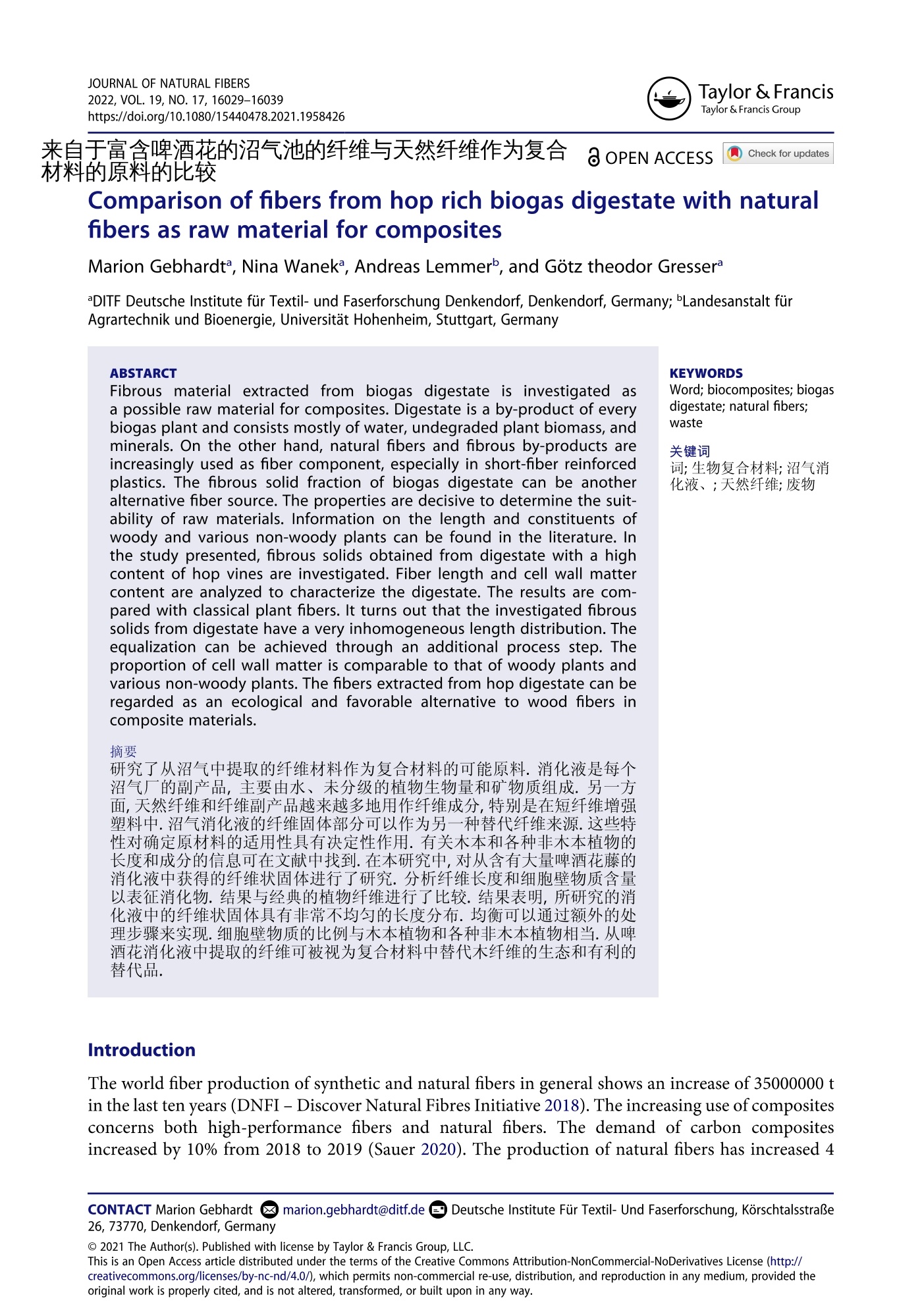
-
2/11
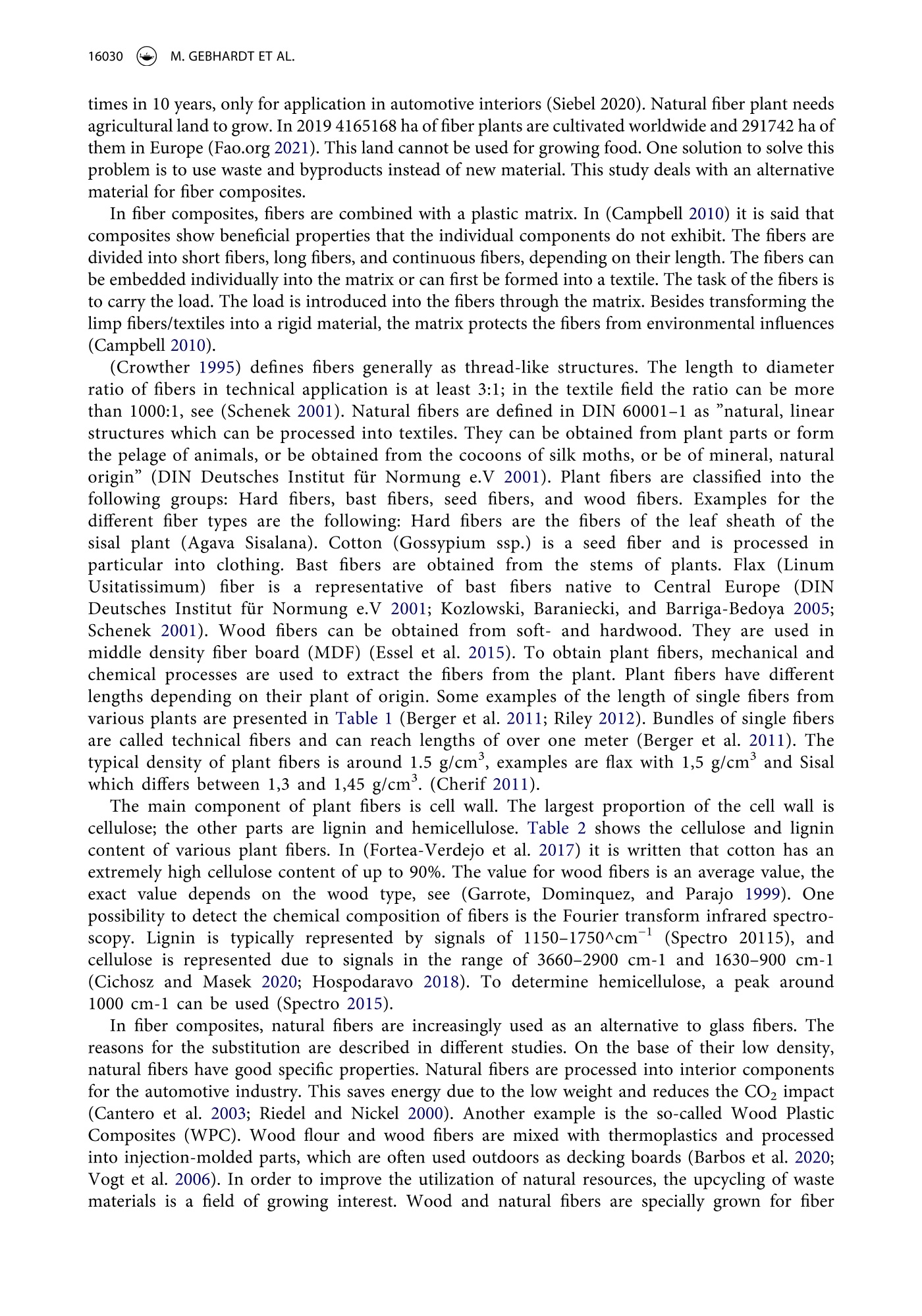
还剩9页未读,是否继续阅读?
继续免费阅读全文产品配置单
中国格哈特为您提供《废旧植物纤维、木头以及沼渣中纤维素、木质素、半纤维素含量的检测》,该方案主要用于纺织原料中纤维素、木质素、半纤维素检测,参考标准《暂无》,《废旧植物纤维、木头以及沼渣中纤维素、木质素、半纤维素含量的检测》用到的仪器有格哈特全自动型纤维分析仪FT12、格哈特快速纤维测定器FBS6、德国加液器MM。
我要纠错
推荐专场
纤维测定仪、纤维素测定仪、纤维分析仪
更多相关方案




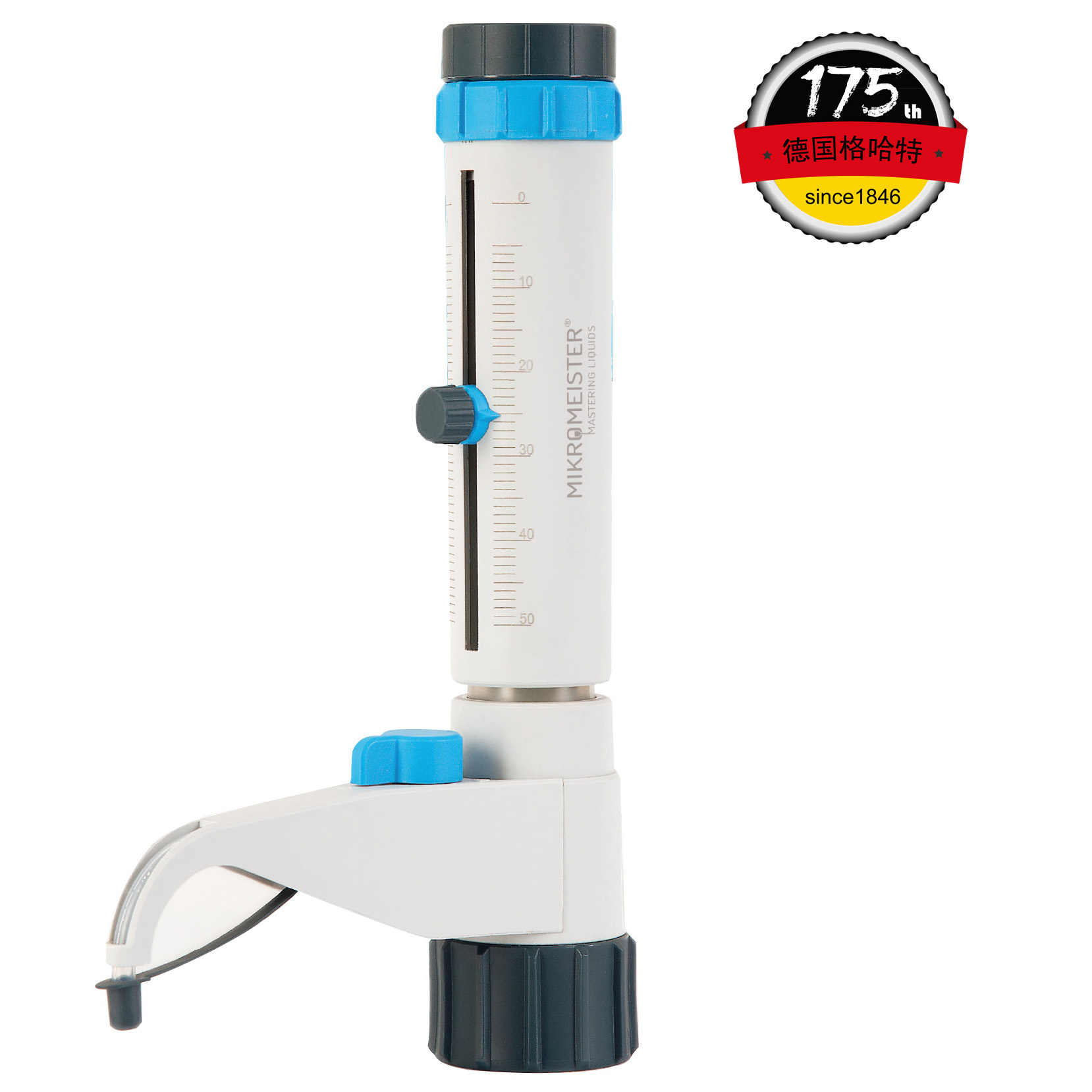
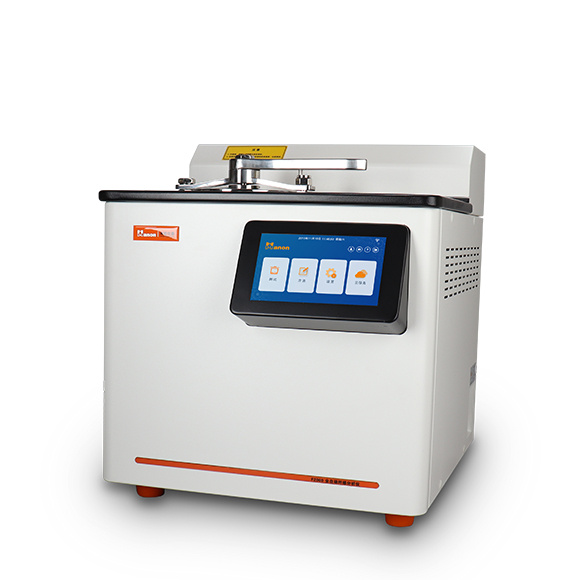

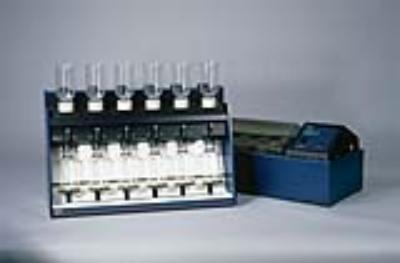



 咨询
咨询